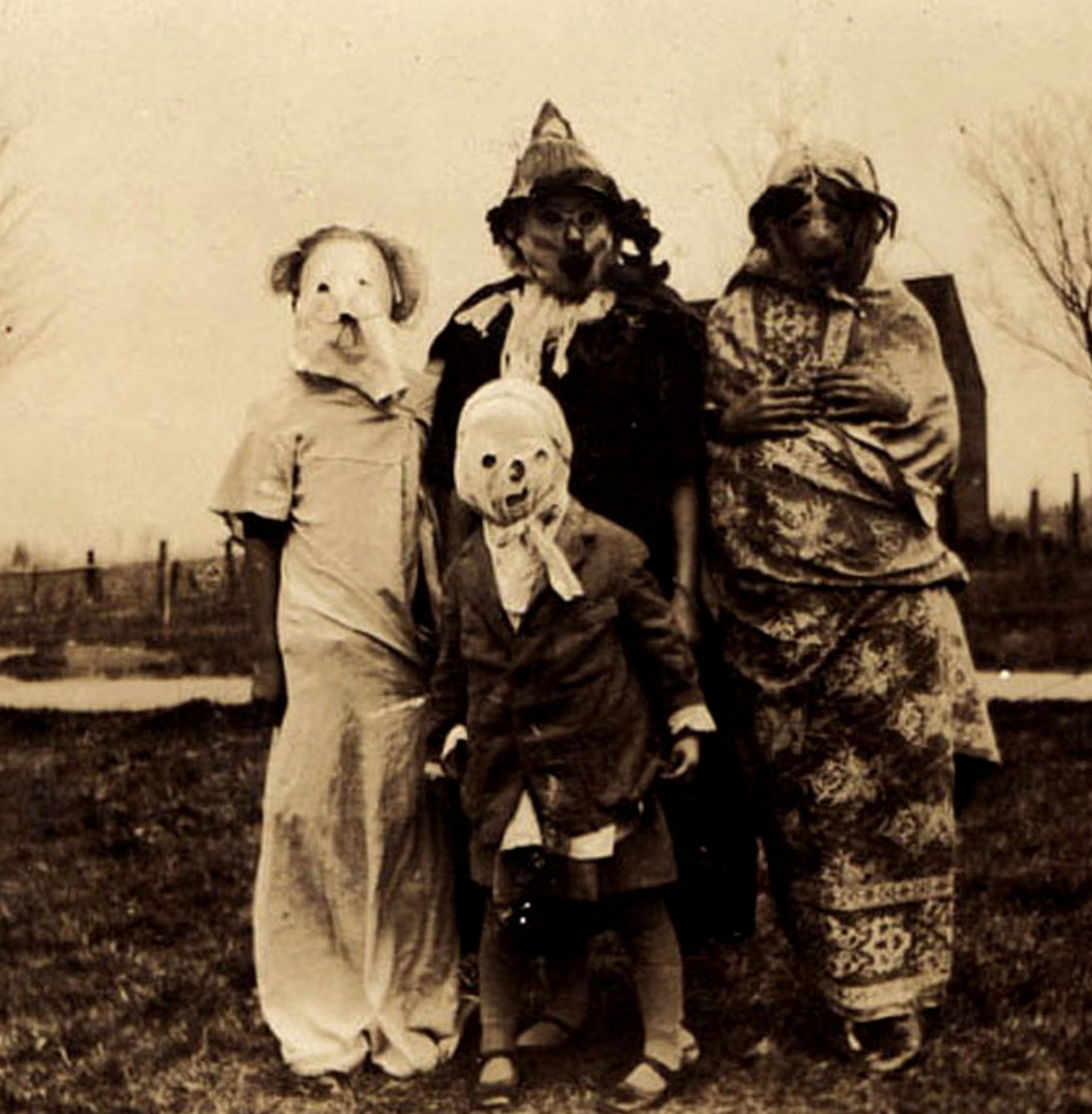🎃 Halloween: A History of Costumes and the Stories They Tell
October rolls around, the leaves turn to fire, and for one night, everyone gets to become someone else. But beneath the candy and cobwebs, Halloween costumes tell a story, a centuries-old tale about identity, rebellion, and the human need to express who we are (or who we wish to be).
From Spirits to Silk Capes
Halloween’s earliest roots trace back to Samhain, an ancient Celtic festival marking the end of harvest season and the beginning of winter, when the veil between the living and the dead was said too thin. People would disguise themselves in animal skins and masks to ward off wandering spirits. It wasn’t about parties or pumpkins; it was protection through presentation.
Over time, these disguises evolved. By the 9th century, Christian influences blended with old traditions, and “souling” began, children dressing up and going door-to-door offering prayers for the dead in exchange for food.
Sound familiar?
When Masquerade Met Pop Culture
Fast forward to the Victorian era, when costumes became more theatrical. Masquerade balls inspired elegant disguises, while Halloween parties added a dose of mystery and mischief. But it was in 20th-century America that Halloween truly became a cultural phenomenon.
Costumes shifted from homemade and symbolic to store-bought and cinematic. Hollywood entered the chat.
The 1930s saw paper mâché masks and spooky ghosts. The 1950s brought superheroes and TV stars. By the 1980s, plastic masks and pop culture dominated the aisles, a reflection of who society admired, feared, or laughed at.
Every generation’s costumes became a time capsule of its imagination.
Costumes as Commentary
At their core, Halloween costumes are social mirrors. They reveal what we value, what we fear, and what we dream of being, all wrapped in satin, sequins, or fake blood. In the 1940s, dressing up was a simple joy in the midst of war. In the 1970s, counterculture took over, witches, rock stars, rebels. In the 2000s, we saw irony and parody: the rise of “meta” costumes that poke fun at our own society.
Today, costumes range from hand-sewn heirlooms to fast fashion throwaways, a reminder that how we make and consume them says as much about us as who we choose to become.
From Factory to Fabric of the Story
For makers like us, Halloween is more than nostalgia. It’s proof that clothing has always been storytelling.
When someone puts on a costume, whether it’s a 1920s flapper, a 1970s rock god, or a 2020s superhero, they’re not just playing pretend. They’re connecting with history, emotion, and creativity.
We dress to reveal, to hide, to play, to dream, and sometimes, to remember.
So this Halloween, before you slip on your costume, take a moment to think about what you’re really wearing.
Every thread ties back to someone, somewhere, trying to say something.
Because from Samhain to superheroes, it’s never just a costume.
It’s a story.
🪡 Wear your story — even when it glows in the dark.
Happy Halloween from us at Bards, my costume won scariest at this year’s family party




